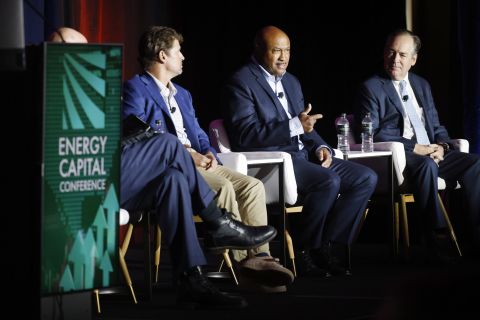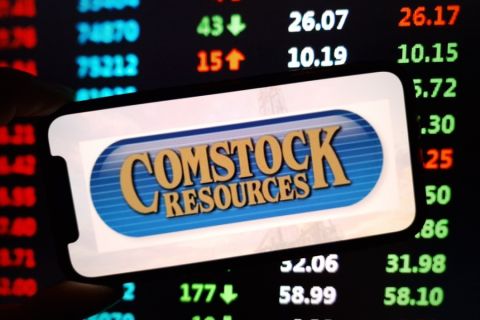
The end of the first half of 2015 brought a close to the 12-month largest decline in commodity prices since the financial crisis of 2008 to 2009. The good news is that analysts anticipate the NGL and natural gas markets to improve in the second half of 2015.
Though NGL prices improved significantly the final week of June, this is typical of the market as activity increases with traders looking to consolidate positions. In fact, this helped push prices up to their highest levels since this last consolidation at the end of May.
Isobutane prices experienced the biggest bump, which was driven by several factors: It is likely the product hit its floor in the past month and was due for a bounce back and the limited isomerization capacity available, especially in the Midcontinent. This resulted in the Conway price improving 19% to 51 cents per gallon (gal) while the Mont Belvieu price rose 14% to 55 cents/gal.
Though the gains posted by propane weren’t as large, they were perhaps more significant as the industry has been searching for a floor on the product. Propane prices continue to struggle compared to the value they had last year at the same time, but experienced their first uptick in six weeks at Mont Belvieu.
How much this uptick was a result of a bounce back is unknown as LPG exports experienced a rebound following tropical storm Bill, which caused a shutdown of the Houston Ship Channel. There was also a fear that storage facilities wouldn’t be able to accept volumes due to rain water increasing freshwater levels in brine ponds, but these fears have subsided.
“Prices rebounded strongly last week, as brine issues at Lone Star’s Mont Belvieu storage terminal were seen as transitory and not endemic of a larger containment issue,” PIRA Energy Group said in a June 30 research note.
Despite these positives, the outlook for propane is still negative until the winter heating season begins and even any improvements at that point are dependent on how large storage levels grow this summer. Margins have improved enough that they are firmly positive, but another large price drop could turn margins negative for a time.
The U.S. market has been more interconnected with the Canadian market in the past few years as shale production has grown. This has largely been a positive for producers and operators in both countries, but the current downturn is pulling back on both countries’ markets.
In its June NGL Snapshot, Wells Fargo Securities stated that the Canadian NGL market is oversupplied and is likely to remain so in the near term with production likely to track gas production on a stable or slightly declining curve for the next few years.
“For propane, pricing in Canada will likely track U.S. pricing (less a transportation discount) in the near term given that exports to the United States represent the only viable outlet for excess Canadian NGL. Longer term, the start-up of a potential new PDH plant by Williams and our assumption that at least one West Coast LPG export project will be constructed should materially reduce exports of propane to the United States and could ultimately lead to higher propane prices in Canada,” according to the report.
Natural gas prices held firm this week with the Conway price up 1% to $2.69 per million Btu (MMBtu) and the Mont Belvieu up 1% at $2.77 per MMBtu. This was a positive for frac spread margins, which were largely up at both hubs.
The most valuable NGL to make at both hubs was C5+ with a margin of 92 cents/gal at Conway and 90 cents/gal at Mont Belvieu. This was followed, in order, by isobutane at 24 cents/gal at Conway and 27 cents/gal at Mont Belvieu; butane at 20 cents/gal at Conway and 25 cents/gal at Mont Belvieu; propane at 9 cents/gal at Conway and 14 cents/gal at Mont Belvieu; and ethane at negative 2 cents/gal at Conway and nil at Mont Belvieu.
Natural gas storage increased by only 69 billion cubic feet, indicating increased cooling demand. The U.S. Energy Information Administration reported that storage rose to 2.577 trillion cubic feet (Tcf) the week of June 26 from 2.508 Tcf the previous week. This was 35% higher than the 1.915 Tcf posted last year at the same time and 1% higher than the five-year average of 2.548 Tcf.
Cooling demand should be average heading into July as the National Weather Service is forecasting normal temperatures in the Northeast with warmer-than-normal temperatures in the Southeast and parts of the Gulf Coast and Northwest.
Contact the author, Frank Nieto, at fnieto@hartenergy.com.



Recommended Reading
Post Oak Backs New Permian Team, But PE Faces Uphill Fundraising Battle
2024-10-11 - As private equity begins the process of recycling inventory, likely to be divested from large-scale mergers, executives acknowledged that raising funds has become increasingly difficult.
Analyst: Is Jerry Jones Making a Run to Take Comstock Private?
2024-09-20 - After buying more than 13.4 million Comstock shares in August, analysts wonder if Dallas Cowboys owner Jerry Jones might split the tackles and run downhill toward a go-private buyout of the Haynesville Shale gas producer.
BP Profit Falls On Weak Oil Prices, May Slow Share Buybacks
2024-10-30 - Despite a drop in profit due to weak oil prices, BP reported strong results from its U.S. shale segment and new momentum in the Gulf of Mexico.
Sheffield: E&Ps’ Capital Starvation Not All Bad, But M&A Needs Work
2024-10-04 - Bryan Sheffield, managing partner of Formentera Partners and founder of Parsley Energy, discussed E&P capital, M&A barriers and how longer laterals could spur a “growth mode” at Hart Energy’s Energy Capital Conference.
Comments
Add new comment
This conversation is moderated according to Hart Energy community rules. Please read the rules before joining the discussion. If you’re experiencing any technical problems, please contact our customer care team.




